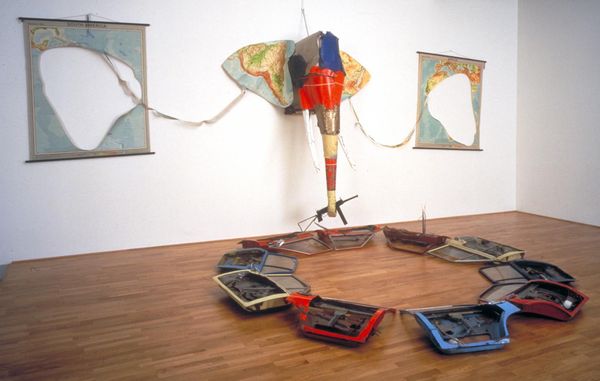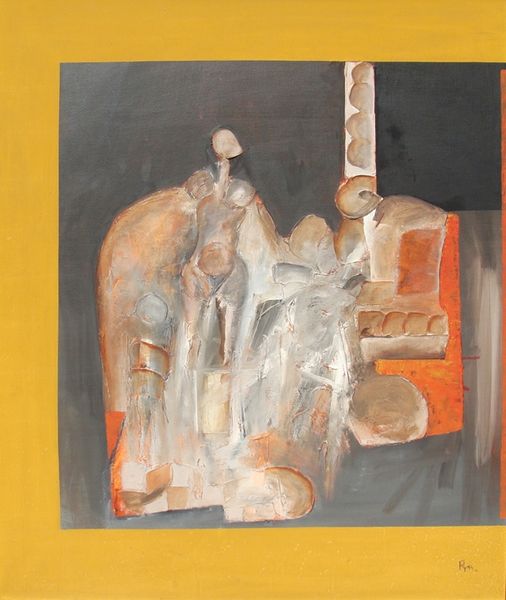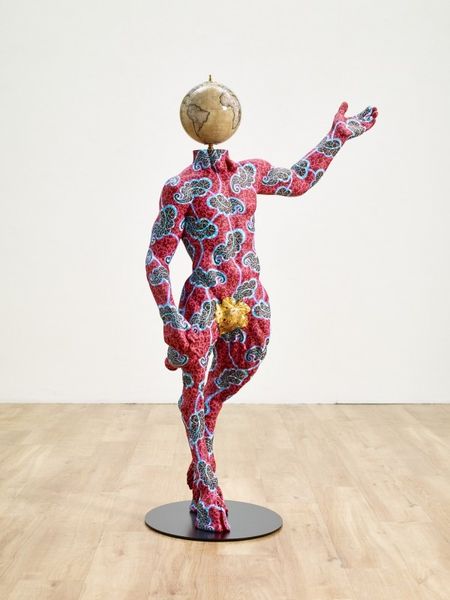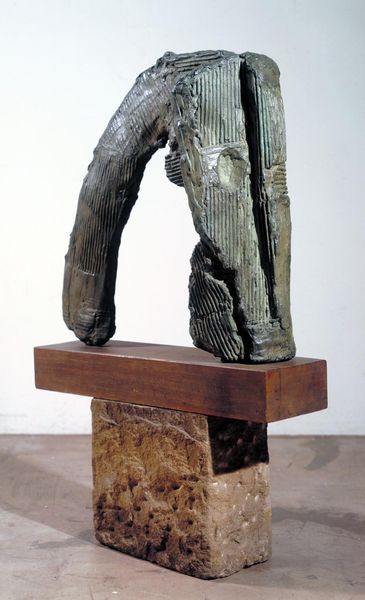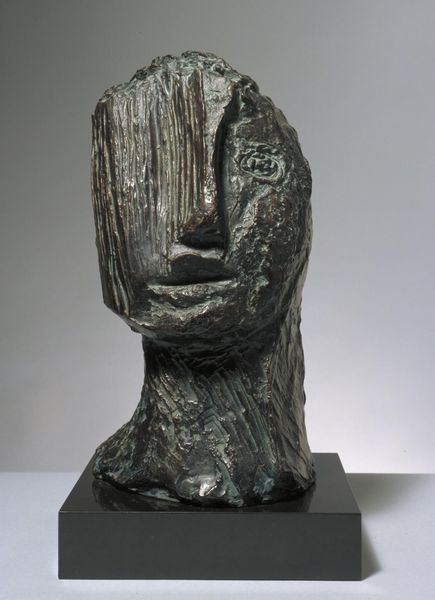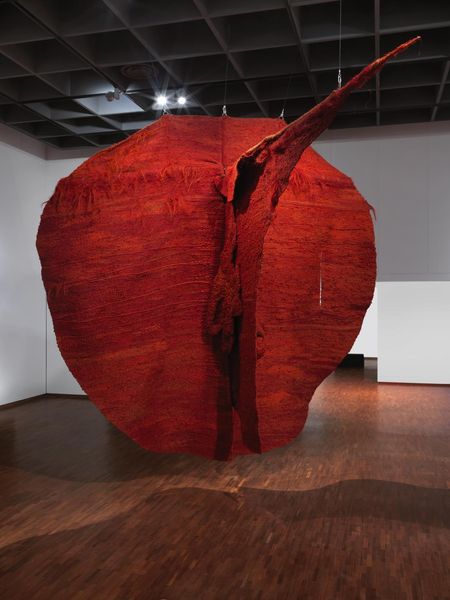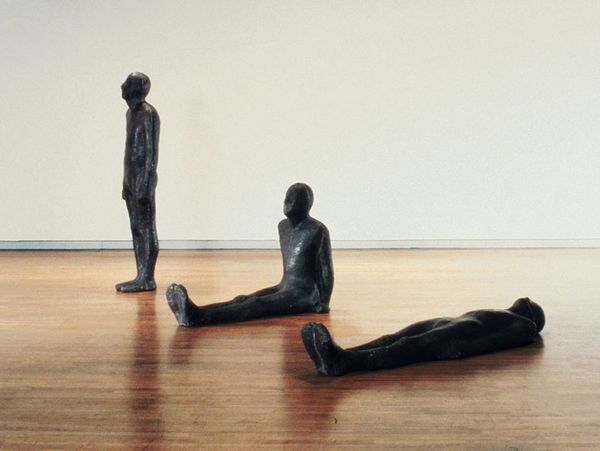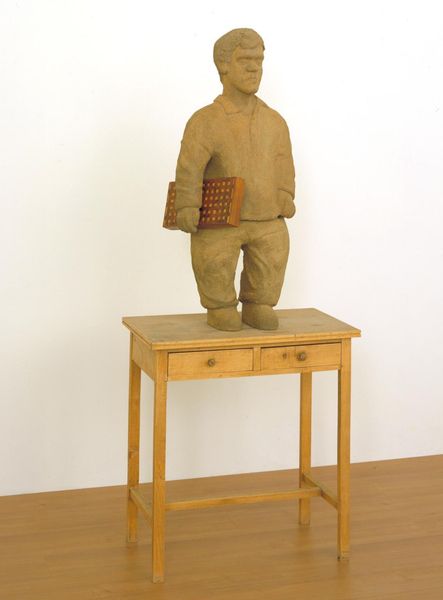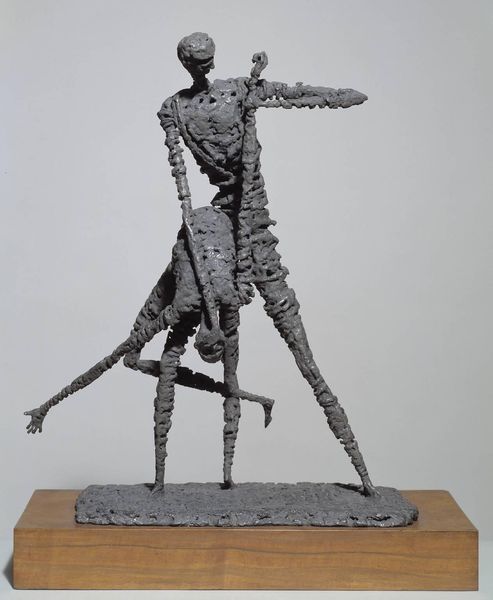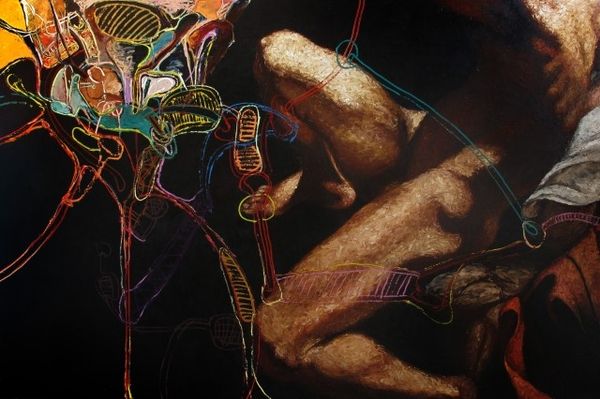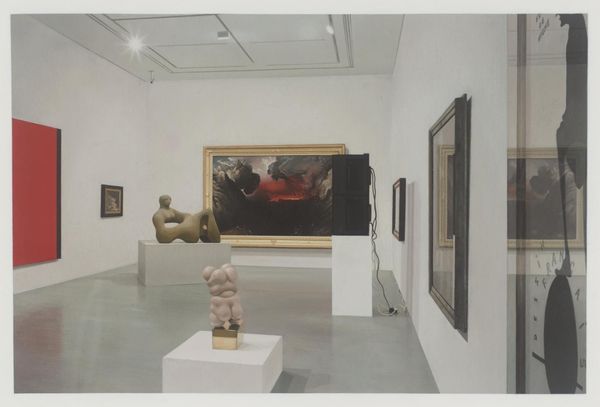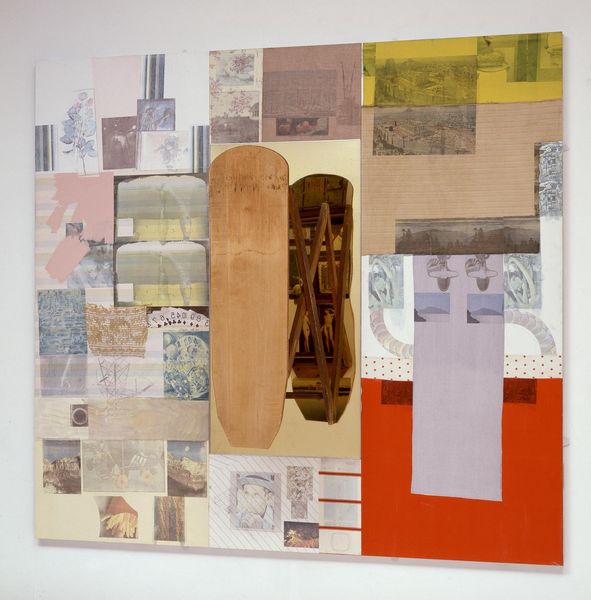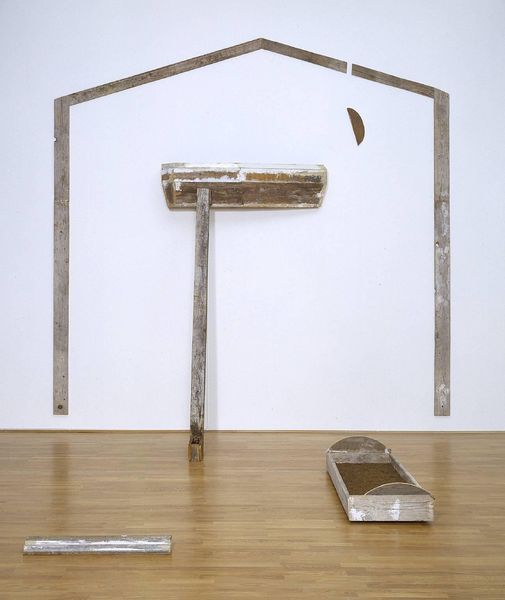
Copyright: Georg Baselitz,Fair Use
Curator: Directly in front of us is Georg Baselitz’s striking mixed-media sculpture, "Model for a Sculpture," created in 1980, currently held at the Museum Ludwig in Cologne. Editor: The figure demands attention, doesn't it? So raw and untamed. It immediately conveys a sense of struggle, or perhaps a defiance against… something. Curator: It’s worth noting Baselitz's position within German Expressionism and his challenge to conventional representation. The sculpture acts as a preliminary study, connecting deeply to ideas about artistic process, where models capture initial ideas before their final manifestation. Think of its relation to broader cultural discourses around representation, identity, and power. It rejects idealism and traditional aesthetics. Editor: Exactly! I feel that so acutely here. Look how the artist renders the body—the crudeness of the carving, that unfinished quality. It seems less concerned with objective beauty and more interested in revealing something internal, maybe even grotesque. There’s a violence, or maybe visceral honesty in the process and execution that aligns perfectly with the post-war artistic mood. It evokes feelings of anger and despair from collective trauma. Curator: The sculpture prompts consideration on the impact of political realities on artistic expression. Post-war Germany sought to distance itself from oppressive cultural norms; and this sculpture does exactly that through deconstruction and questioning of traditional art production, with very deliberately unpolished style to represent collective angst. Editor: And the wood! I’m captivated by the rawness of it, that contrast between the warm tones of the unpainted wood and the crude blacks and reds. It underscores that sense of materiality and presence, pulling it away from any illusionism. We cannot disconnect the history of war from materiality itself. Curator: Precisely. The art's success depends not merely on viewing but truly contextualizing it through socio-historical lenses. Consider Baselitz’s contemporaries and influences: What anxieties drove artists of that era? Editor: Right, seeing this piece makes me think how its reception has likely evolved. Back then, would audiences have seen only ugliness, a rejection of tradition? Now, we recognize its depth, its commentary on fragility. It highlights that the public role of art is constantly negotiated by various audiences, politics, and aesthetics. Curator: Yes, engaging with art history can open a dialogue with present-day struggles, letting us decode artistic resistance. Editor: Thank you. That reframing gave me new tools for analysis; understanding artwork not in isolation, but understanding it with context to past movements helps a great deal.
Comments
No comments
Be the first to comment and join the conversation on the ultimate creative platform.
